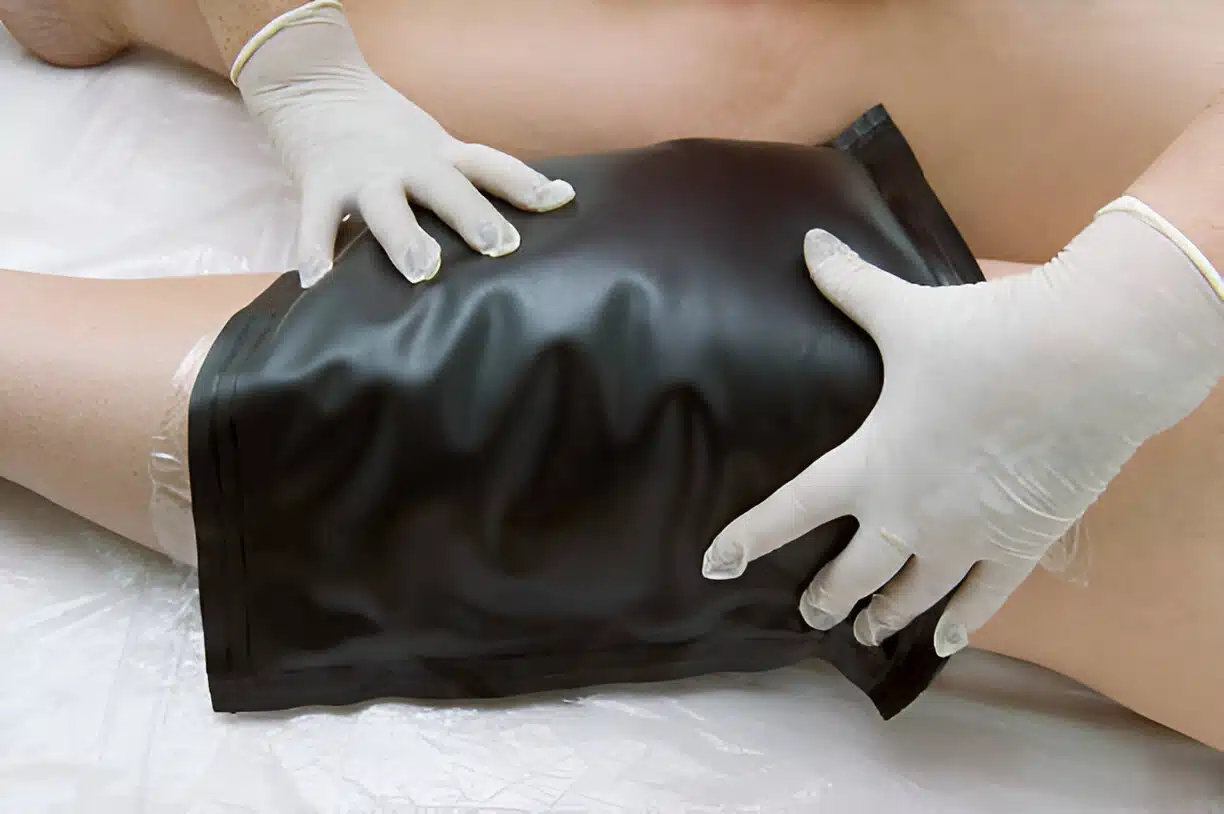
Struggling with muscle pain, inflammation, or stiffness? Heat and cold therapy can be an effective, natural way to relieve discomfort and promote healing. Whether you’re dealing with a sports injury, chronic pain, or everyday aches, alternating heat and cold treatments can help reduce symptoms and support recovery.
Heat therapy works by increasing blood flow, relaxing tight muscles, and improving flexibility, making it ideal for soothing chronic pain and stiffness. Cold therapy, on the other hand, reduces inflammation, numbs sharp pain, and helps minimize swelling after an injury. When used together or separately, these therapies can provide significant relief for sore muscles, joint pain, and post-exercise recovery.
Incorporating heat and cold therapy into your wellness routine can help speed up recovery and keep pain at bay. If you're looking for a simple, effective way to manage pain and enhance mobility, consider making heat and cold therapy part of your care plan. Learn more about personalized wellness solutions at chiropractors for heat and cold therapy in Robbinsville Township, NJ.





At Washington Wellness Center, we offer specialized Heat and Cold Therapy to help relieve pain, reduce inflammation, and promote overall wellness. Our skilled chiropractors utilize these therapeutic modalities to cater to individual needs, whether you’re recovering from an injury, managing chronic pain, or simply looking to enhance your overall health. Heat therapy helps to relax and soothe tight muscles, improve circulation, and encourage healing, while cold therapy effectively numbs pain and reduces swelling. By combining these techniques with personalized chiropractic care, we aim to provide our patients with a comprehensive approach to wellness that fosters recovery and improves quality of life. Experience the benefits of Heat and Cold Therapy at Washington Wellness Center by completing your patient form and take a step towards feeling your best.
Heat and cold therapy can be effectively applied using various techniques tailored to patient needs. Heat therapy typically involves the use of heat pads, warm towels, or ultrasound treatments that increase circulation to the affected area. This can be particularly beneficial for chronic pain conditions like arthritis or stiffness in the lower back. Cold therapy, on the other hand, often utilizes ice packs, cryotherapy, or cold water immersion to reduce inflammation and numb acute pain. These methods can also aid in alleviating delayed onset muscle soreness (DOMS) following intense exercise.
When implementing these therapies, attention must be paid to skin sensitivity and proper application duration. Heat sources should be set at a comfortable temperature to avoid burns or soft tissue damage. For cold therapy, it's essential to limit exposure to prevent skin irritation. Alternating between heat and cold can further enhance pain relief and promote better flexibility and range of motion. Each treatment modality can be adapted depending on the patient's specific symptoms and underlying conditions, ensuring a more personalized approach to pain management.
Heat therapy is often used to increase blood circulation and promote relaxation in sore muscles. Applying heating pads, hot packs, or taking warm showers can be particularly beneficial after workouts or when dealing with chronic conditions such as arthritis. This warmth encourages vasodilation, which helps to relieve muscle tension and discomfort. Practitioners frequently recommend heat treatment for conditions like muscle soreness, back pain, and tendonitis, emphasizing its role in easing aches and enhancing recovery during the healing process.
Cold therapy serves a different purpose, primarily aimed at reducing inflammation and numbing sharp pain. Methods such as icing, using cold compresses, or exposure to ice packs can be quite effective for acute musculoskeletal injuries or swollen areas. This treatment slows blood circulation and decreases metabolic demands in the affected tissues, thus alleviating spasms and joint pain. Healthcare professionals advise using cold therapy immediately after injuries to minimize swelling and promote faster recovery, especially in instances of strains or overexertion.
When implementing heat and cold therapy, it is essential to consider each patient’s unique needs and medical history. Conditions like diabetes or circulatory issues can affect how an individual responds to temperature therapies. For instance, patients with poor circulation may experience adverse reactions such as frostbite or irritation when using cold treatments. A thorough assessment can help identify the most effective methods while ensuring safety, particularly for those with underlying health conditions.
Additionally, the choice of modality should align with the specific injury or discomfort being addressed. For muscle strains and sprains, alternating heat and cold can provide significant relief. Techniques such as warm compresses or ice baths may be advised based on the injury’s stage, while hydrotherapy options like hot tubs and cryotherapy chambers can further enhance recovery. Each therapy’s effectiveness may vary, necessitating personalized adjustments and ongoing evaluation throughout the treatment period.
Effective treatment requires an understanding of each patient's unique circumstances. Different conditions such as tendinitis, sprains, and chronic back pain may respond better to specific therapies. For example, cold compresses can relieve pain and reduce swelling in acute injuries, while heat application may ease stiffness and promote blood flow in chronic conditions like arthritis. Tailoring the approach based on a thorough assessment ensures the chosen method aligns with the individual's specific injury type and overall health profile.
Consideration of past medical history, current medications, and any existing health issues is also essential in customizing therapy. Patients with conditions like hypertension or those prone to cold allergies should exercise caution when using heat and cold treatments. Additionally, their response to previous pain-relief methods can guide therapists in selecting an optimal course of action. Regular monitoring and adjustments to the treatment plan can further enhance the therapeutic effect, ensuring that each patient receives the most effective care for their unique condition.
Heat and cold therapy can provide significant pain relief and promote healing, but it is essential to be aware of potential risks. Patients with certain health conditions, such as high blood pressure, diabetes, or heart disease, may experience adverse effects from improper application of these therapies. For instance, applying heat to swollen or inflamed joints can exacerbate issues, while cold therapy may lead to skin damage if not used carefully. Individuals with sensitivity to temperature changes or vascular disorders should approach heat and cold treatment with caution.
It is crucial for healthcare professionals to assess each patient's unique situation before recommending a therapy regimen. Patients with cervical degenerative disc disease, chronic muscle pain, or gout may require tailored treatments to prevent complications. Additionally, pregnant individuals and those undergoing cancer care should consult their healthcare provider to determine the safest approach to using heat or cold as part of their pain management strategy. Proper education on application techniques can minimize risks and enhance the effectiveness of these therapies.
Heat and cold therapies are widely used for their potential to alleviate pain and promote relaxation. However, these modalities come with their own set of risks and potential adverse effects. Overexposure to heat can lead to burns or heat-related illnesses, particularly for individuals with sensitive skin or conditions like nervous system disorders. Cold therapy, though effective for reducing swelling, may cause frostbite or tissue damage if applied for too long or directly on the skin without a barrier. Care must be taken to avoid contraindications, such as existing open wounds or certain medical conditions like bursitis or spinal stenosis, which can exacerbate symptoms rather than provide relief.
Patients may also experience side effects such as increased anxiety or discomfort during initial treatments as their bodies adapt to the therapies. Allergic reactions to topical gels or medications used in conjunction with these treatments can occur. Evaluating patient history is essential, especially in the context of pre-existing conditions or concurrent use of non-steroidal anti-inflammatory drugs (NSAIDs) and muscle relaxers. By carefully considering these factors, practitioners can minimize the potential for adverse effects while maximizing the benefits of heat and cold therapy in their practice. Our chiropractors accept most insurance plans, making holistic treatments more accessible to those in need of care.
Heat therapy involves applying heat to the body to relieve pain and improve circulation. It works by dilating blood vessels, which increases blood flow to the affected area, helping to relax muscles and alleviate discomfort.
Cold therapy helps reduce swelling and inflammation, numbs pain, and slows down nerve conduction. It's often used for acute injuries, such as sprains or strains, to minimize damage and promote recovery.
For heat therapy, it is generally recommended to apply for 15-20 minutes at a time. For cold therapy, you should apply it for 10-15 minutes, allowing for breaks in between to prevent skin damage.
Yes, risks include burns or skin irritation from heat therapy and frostbite or nerve damage from cold therapy. It's important to use protective barriers and monitor the skin during treatment.
The choice between heat and cold therapy depends on the nature of your condition. Cold therapy is usually best for acute injuries or inflammation, while heat therapy is more effective for chronic pain or muscle stiffness. Consulting a healthcare professional can provide personalized recommendations.
Copyright © Washington Wellness Centers. All Rights Reserved